Tokyo’s neon-lit streets and packed subway stations might be the first things that pop into your head when someone mentions Japan’s capital. And while these iconic scenes definitely tell part of the story, they’re just the beginning of what this remarkable city has to offer. Having spent countless nights wandering through its maze-like neighborhoods, I’ve learned that Tokyo is really a collection of small towns, each with its own personality and hidden corners.
Beyond the well-known spots like Shibuya Crossing and Tokyo Tower, you’ll find quiet temple gardens, local markets where grandmas shop for dinner, and tiny bars that seat just a handful of people. The city rewards those who take time to explore its layers, from early morning fish auctions to late-night ramen shops. If you’re ready to discover both the famous landmarks and the lesser-known gems, here’s my carefully curated list of the best places to visit in Tokyo.
- Best food spot: Tsukiji Outer Market
- Best nightlife area: Shinjuku Golden Gai
- Best cultural experience: Senso-ji Temple
- Best shopping district: Harajuku
- Best chill-out spot: Ueno Park
- Best photo opportunity: Tokyo Skytree
Shibuya Crossing

Experience the world’s busiest pedestrian crossing at Shibuya Crossing, where up to 3,000 people cross at once during peak times. You can watch the organized chaos from several vantage points, including the Starbucks on the second floor of the Q-Front building or the FREE observation deck at Shibuya Sky. For the best photos, visit during rush hour or after dark when the massive digital billboards light up the intersection. Stop by the nearby Hachiko statue, a popular meeting spot that honors Japan’s most loyal dog, before diving into the surrounding streets filled with shops and restaurants.
Senso-ji Temple
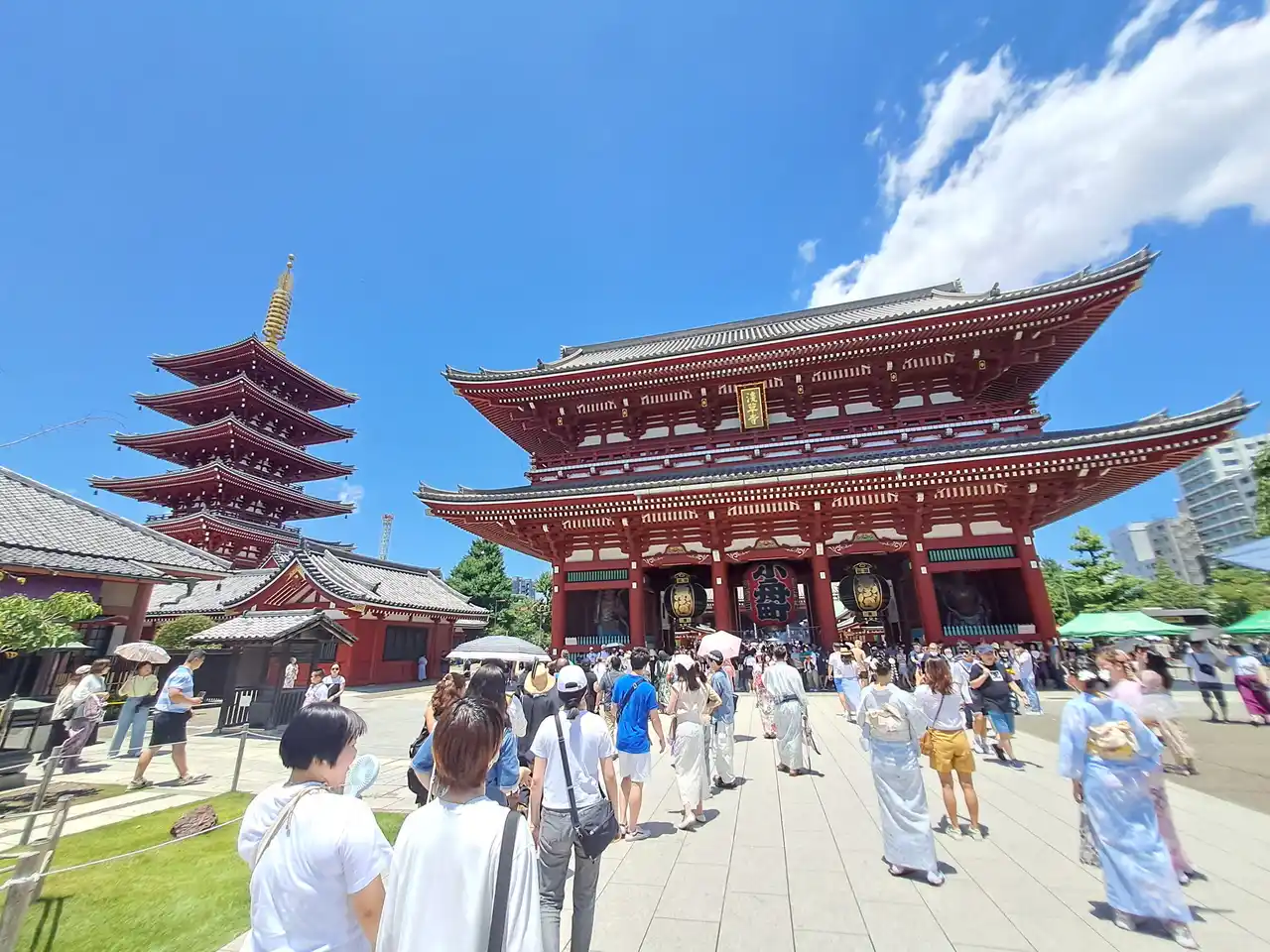
Have you ever seen thousands of people tossing coins and wafting incense smoke in the air? It’s a daily scene at Senso-ji Temple, Tokyo’s oldest Buddhist temple located in the heart of traditional Asakusa. Built in 645 AD, this iconic red temple draws visitors through the massive Thunder Gate with its giant red lantern, past a long shopping street filled with traditional snacks and souvenirs. You can follow local custom by cleansing yourself with incense smoke, said to bring good health, or try your luck at getting a fortune from one of the temple’s wooden drawers. The five-story pagoda and main hall are particularly beautiful when lit up at night, making it worth visiting any time of day.
Tokyo Skytree

Standing at 634 meters (2,080 feet), the Tokyo Skytree has become Tokyo’s most recognizable landmark since opening in 2012. This towering structure serves as both a broadcasting tower and observation deck, offering some of the best views of the sprawling metropolis below. The main observation decks sit at 350 and 450 meters high, giving visitors unmatched panoramas of Tokyo’s cityscape, with Mount Fuji visible on clear days. At the base, you’ll find a shopping complex called Solamachi, packed with restaurants and stores. What makes the Skytree special isn’t just its height – it’s the way it lights up at night, shifting between different colored illumination patterns that reflect the seasons and special events. The architects even incorporated traditional Japanese aesthetics into its modern design, using a concave curve that references historic pagodas.
Shinjuku Gyoen National Garden

Many visitors flock to Shinjuku Gyoen National Garden for its perfect blend of Japanese, English, and French landscaping styles, but this green oasis can also be considered one of Tokyo’s most peaceful retreats. The garden spans over 144 acres, featuring cherry trees, colorful autumn maples, and a traditional Japanese teahouse that offers a quiet escape from the busy city streets. In spring, the garden becomes a popular spot for hanami (cherry blossom viewing), but you’ll find locals and tourists alike enjoying the grounds throughout the year, whether they’re having picnics under the shade trees, photographing seasonal flowers, or simply taking a moment to unwind in the heart of Tokyo.
Meiji Shrine
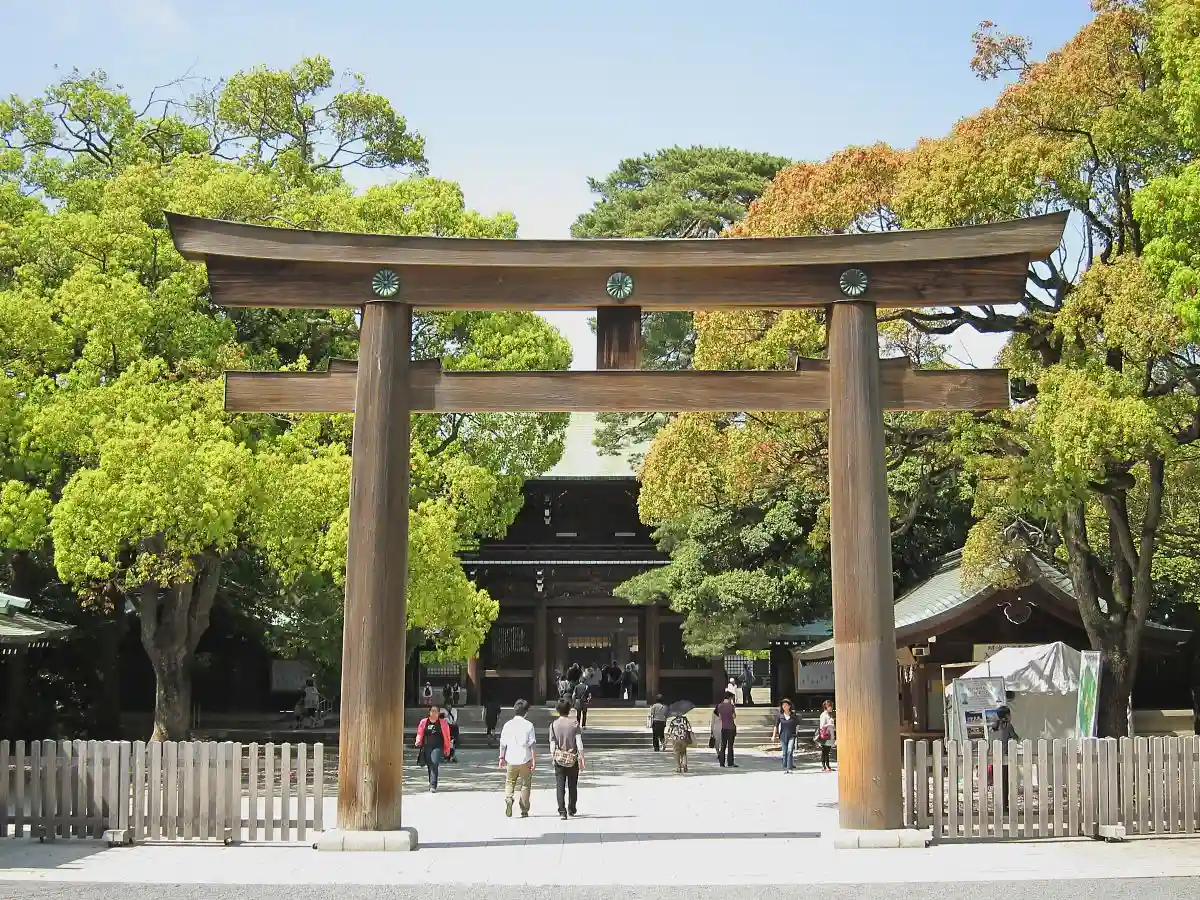
Many travelers come to Meiji Shrine to find peace in the heart of Tokyo, but this sacred space offers more than just spiritual solitude. The shrine, dedicated to Emperor Meiji and Empress Shoken, sits within a 170-acre forest of over 100,000 trees – making it one of the largest green spaces in central Tokyo. While the main shrine draws visitors for its traditional ceremonies and New Year celebrations, the surrounding grounds provide excellent spots for nature walks and photography. In autumn, the shrine’s inner gardens show off seasonal colors, and year-round, visitors can see traditional Shinto weddings taking place on weekends.
Tsukiji Outer Market
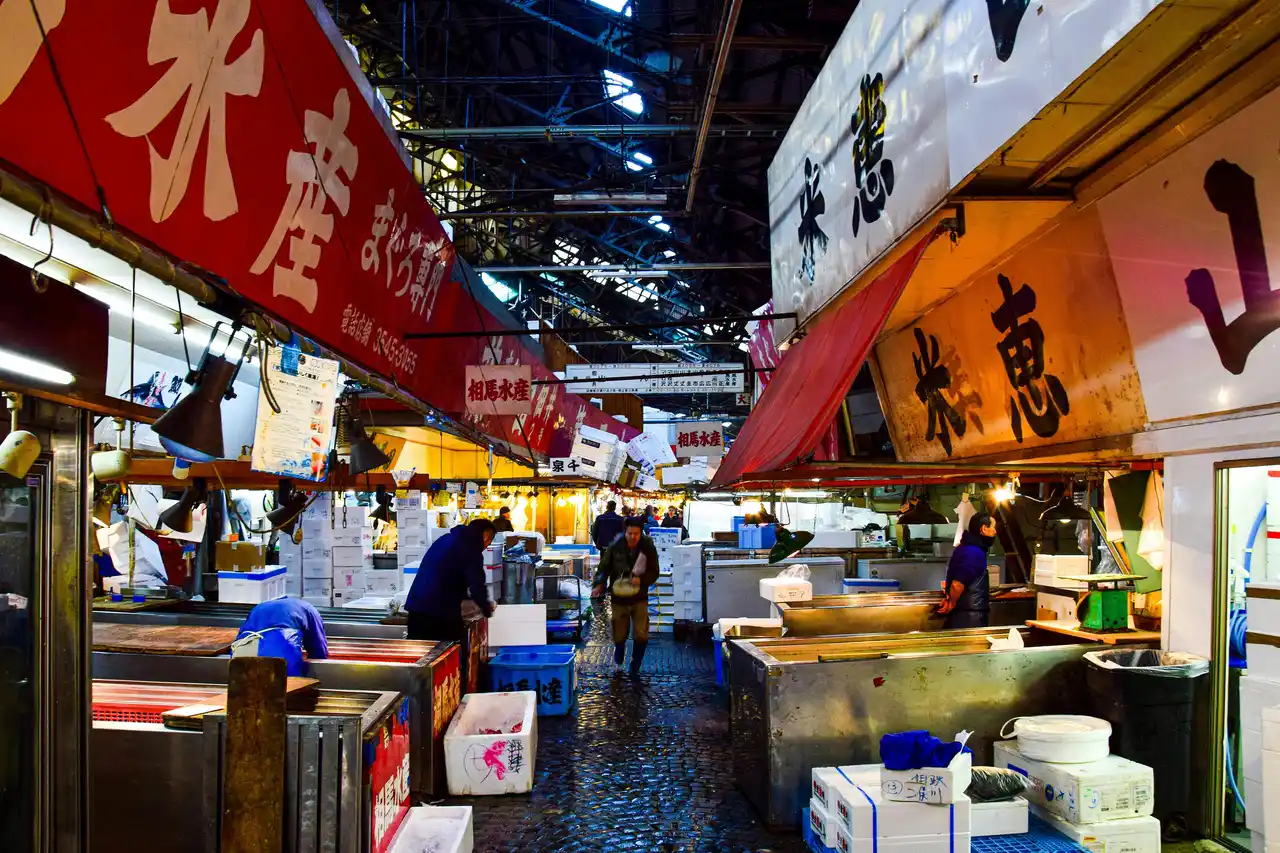
Just steps from where Tokyo’s legendary fish market once stood, Tsukiji Outer Market keeps the area’s seafood legacy alive and well. Like many food markets in Japan, it’s a maze of narrow alleys packed with vendors, but this one specializes in everything ocean-related – from fresh fish to kitchen tools used by sushi masters. While the famous tuna auctions moved to Toyosu in 2018, the outer market still buzzes with activity as local chefs and curious visitors browse more than 400 shops and stalls. Walking through the market, you’ll spot vendors slicing fresh sashimi, grilling dried fish, and serving up seafood bowls that were swimming just hours before. Thanks to its deep connection to Tokyo’s fishing industry, this is where you’ll find some of the freshest sushi breakfast spots in the city, often with lines forming well before dawn.
Akihabara
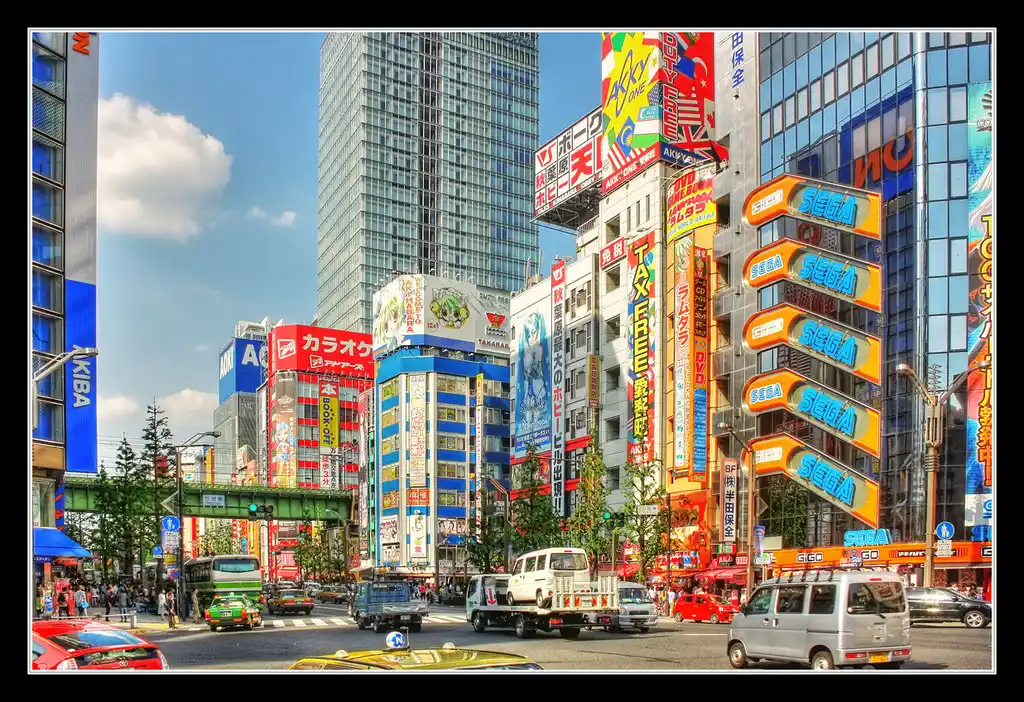
Whenever friends ask about Tokyo’s coolest spots, I tell them to head straight to Akihabara. Known as “Electric Town,” this bustling district is a paradise for tech enthusiasts, anime fans, and pop culture lovers. The streets are lined with towering electronics stores, colorful video game arcades, and shops packed with manga, collectibles, and all things nerdy. From the iconic Sega building to the quirky maid cafes, Akihabara offers a unique glimpse into modern Japanese entertainment culture.
Tokyo Imperial Palace

Ever wonder where Japan’s Imperial Family calls home? Right in the heart of Tokyo stands the Imperial Palace, a massive complex of gardens and historic buildings surrounded by stone walls and moats. While most of the palace remains off-limits to visitors, you can explore the beautiful East Gardens year-round and catch glimpses of the main palace buildings from Nijubashi Bridge. During cherry blossom season, the grounds become one of Tokyo’s most popular spots for hanami (flower viewing), with hundreds of pink trees dotting the ancient fortress walls. If you’re lucky enough to visit on December 23rd or January 2nd, you might even see the Imperial Family make their rare public appearances, when thousands gather to wave and wish them well.
Harajuku
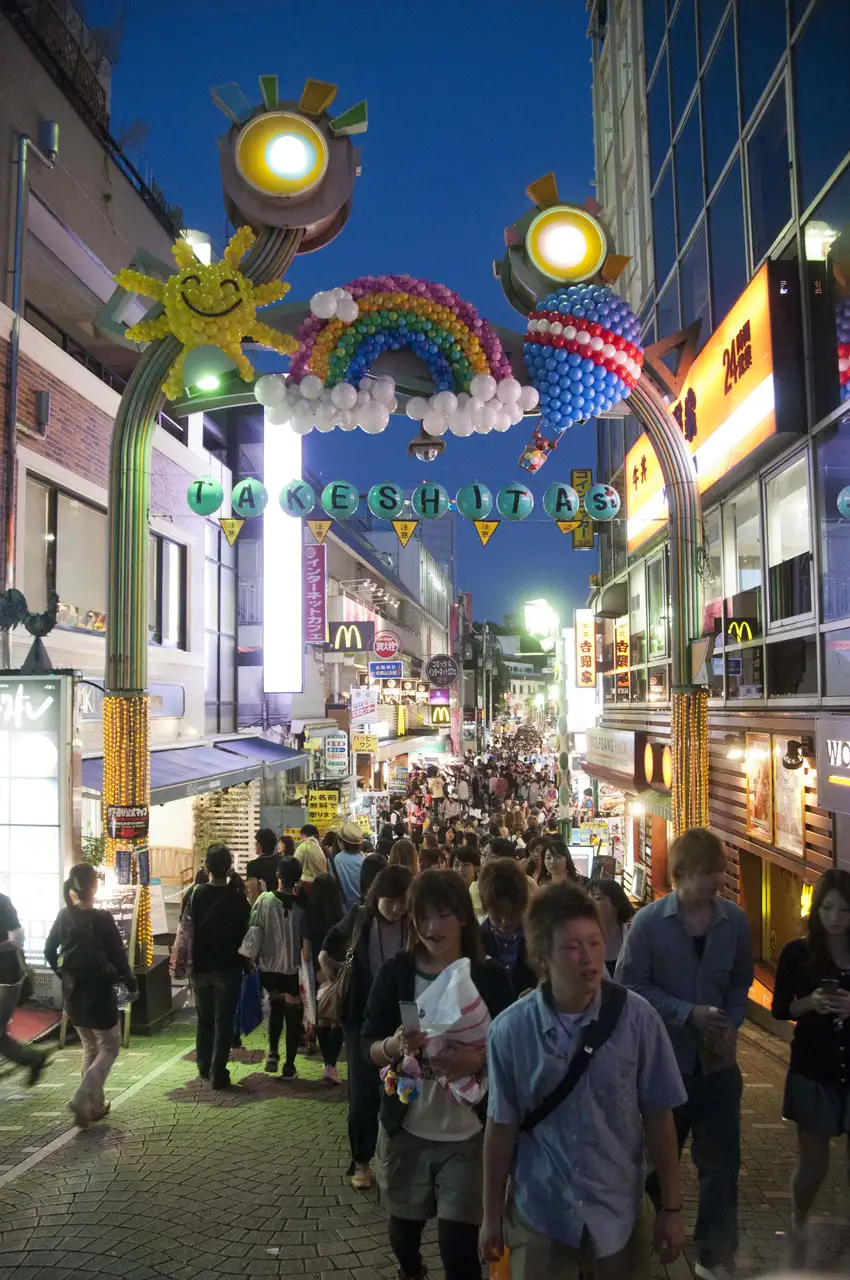
If you’ve never been to Tokyo before, you need to experience Harajuku. Located along the famous Takeshita Street, this young and energetic neighborhood is where Tokyo’s fashion-forward teens and twenty-somethings come to shop, eat, and show off their unique style. The narrow pedestrian street is packed with colorful clothing boutiques, cute cafes serving rainbow-colored treats, and shops selling everything from vintage finds to the latest kawaii (cute) accessories.
Ueno Park

Want to experience Tokyo’s most beloved green space? Welcome to Ueno Park, where cherry blossoms paint the sky pink each spring and locals spread out picnic blankets under centuries-old trees. This 538,000-square-meter oasis in the heart of the city doubles as a cultural hub, housing some of Tokyo’s best museums – from the Tokyo National Museum to the National Museum of Nature and Science. You can spend hours wandering through the peaceful Shinobazu Pond, watching street performers near the central fountain, or exploring the charming Ueno Zoo, home to Japan’s favorite giant pandas. It’s where old Tokyo’s spirit lives on, especially during hanami season when thousands gather to celebrate nature’s annual pink spectacle.
Tokyo Tower
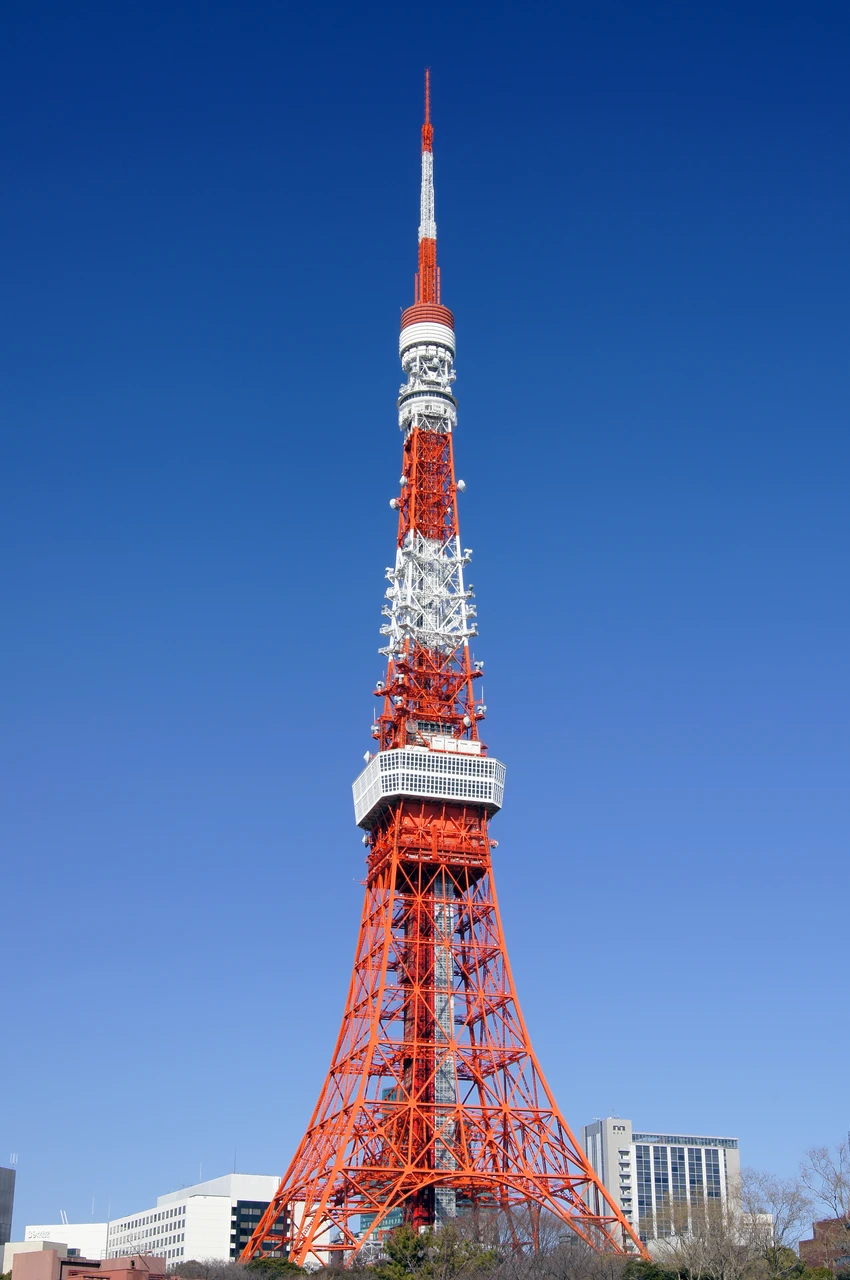
As iconic as Mount Fuji itself, Tokyo Tower stands proud in the heart of Japan’s bustling capital. This 1,092-foot communications tower, painted in classic white and orange, has been a defining feature of Tokyo’s skyline since 1958. While it might remind you of the Eiffel Tower at first glance, it actually stands about 42 feet taller than its Parisian cousin. I’ve found the best time to visit is just after sunset, when the tower lights up in a warm orange glow that reflects off the surrounding skyscrapers. The observation decks offer panoramic views of the city, and on clear days, you can even spot Mount Fuji in the distance. Don’t skip the lower deck’s glass floor panels – they’re perfect for testing your nerve as you peer down at the city streets below.
teamLab Borderless
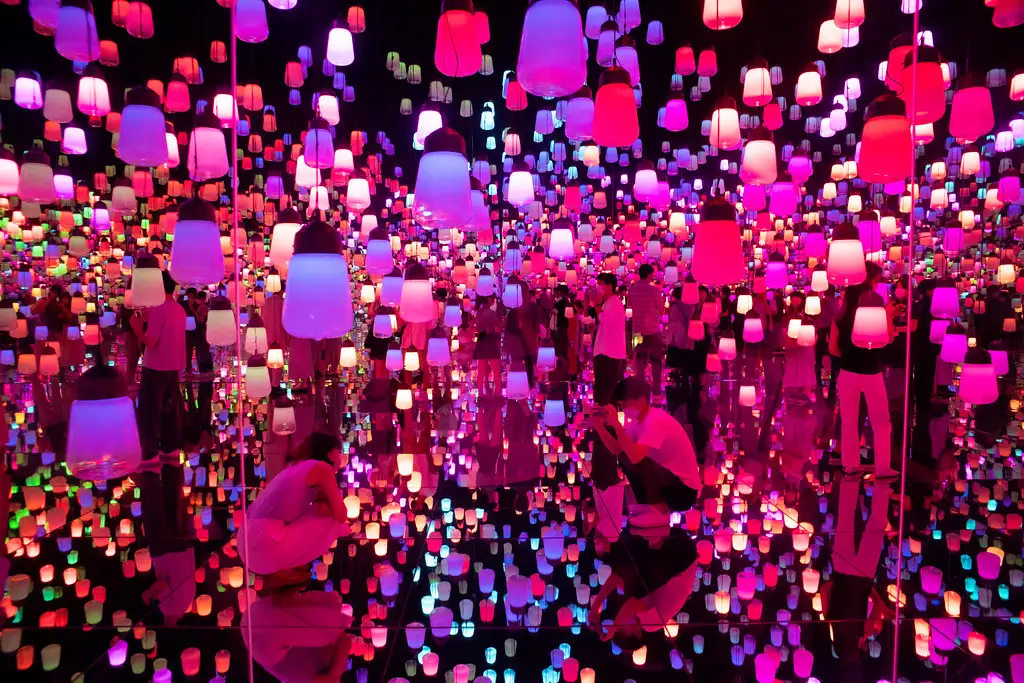
When friends ask me what they absolutely can’t miss in Tokyo, teamLab Borderless always tops my list. This digital art museum takes over an entire building, filling it with ever-changing light displays and interactive installations that move between rooms like living artwork. It’s a place where you can walk through waterfalls of light, follow trails of floating lanterns, and find yourself in rooms where digital flowers bloom all around you. You don’t need to be an art expert to appreciate it – just bring your curiosity and comfortable shoes, because you’ll want to spend hours exploring every corner. The only catch? Be sure to book your tickets well in advance, as this place regularly sells out weeks ahead.
Roppongi Hills
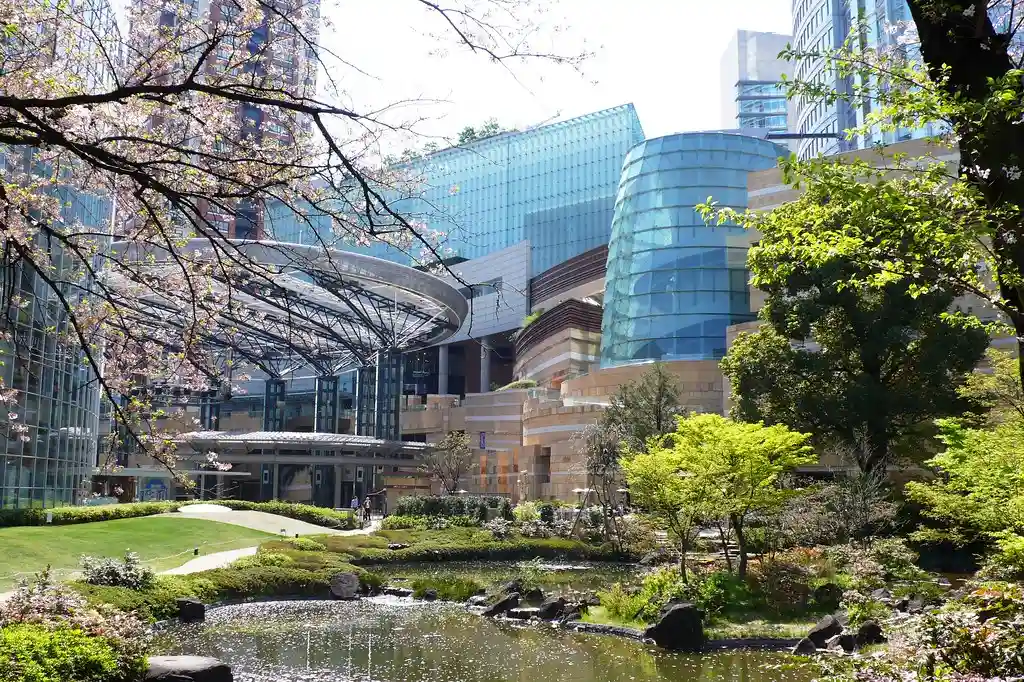
Ever wondered what it feels like to be in Tokyo’s beating heart? Roppongi Hills is where modern Japan comes alive, a sleek mini-city within the city that combines shopping, art, and entertainment. This sprawling complex, anchored by the 54-story Mori Tower, gives you a taste of Tokyo’s future-forward vision while keeping its feet firmly planted in Japanese tradition. From the observation deck at the top, you can spot Mount Fuji on clear days, and the streets below buzz with an mix of local office workers and curious tourists. The complex is home to the Mori Art Museum, countless restaurants serving everything from sushi to pasta, and outdoor spaces where you can catch impromptu art installations or seasonal festivals throughout the year.
Tokyo Disneyland
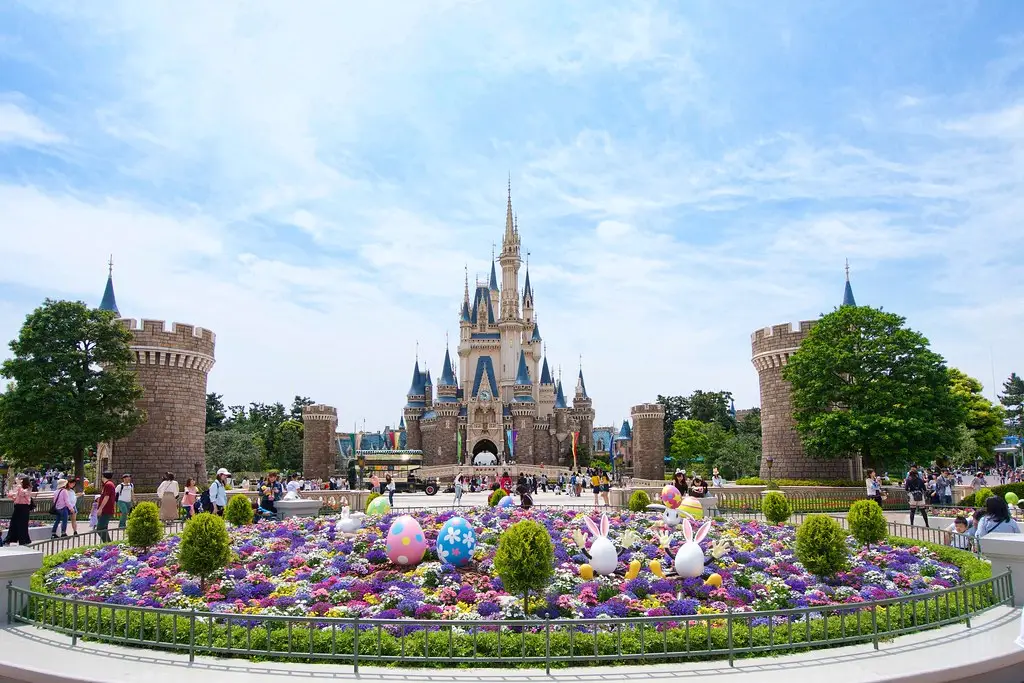
Ever dreamed of meeting Mickey Mouse in Japan? Tokyo Disneyland brings all your favorite Disney characters to life with a unique Japanese twist. Located just 30 minutes from central Tokyo, this was the first Disney park built outside the United States back in 1983. The park combines classic Disney magic with Japanese efficiency and service, creating an experience that feels both familiar and fresh. You’ll find beloved attractions like Space Mountain and It’s a Small World, alongside distinctly Japanese touches like curry-filled Mickey-shaped pastries and green tea ice cream. Don’t miss the nightly parade where thousands of lights transform Main Street into a glowing wonderland that perfectly captures Japan’s love for all things kawaii (cute).
Ghibli Museum

Ever walked into a hand-drawn universe come to life? That’s exactly what you’ll find at the Ghibli Museum, a whimsical wonderland created by animation legend Hayao Miyazaki. Located in Tokyo’s laid-back Mitaka neighborhood, this playful museum brings Studio Ghibli’s beloved characters and stories into the real world. From the life-sized Totoro greeting visitors at the entrance to the exclusive short films shown in the Saturn Theater, every corner feels like stepping into one of Miyazaki’s magical films. You can wander through recreated animation studios, climb aboard the Cat Bus, and discover the secrets behind your favorite animated scenes in the hands-on exhibits. Just remember to book your tickets months in advance – this popular spot limits daily visitors to keep the experience intimate.
Odaiba

Odaiba wasn’t always the fun-filled entertainment district it is today – it started as a series of man-made islands in Tokyo Bay back in the 1850s. Originally built for defense, this waterfront area has evolved into one of Tokyo’s favorite playgrounds, packed with shopping malls, restaurants, and the iconic Fuji TV Building. The artificial beach along the shoreline gives locals a taste of coastal life right in the city, while the 115-meter-tall Ferris wheel lights up the night sky with colorful LED patterns. You’ll find families and couples strolling along the boardwalk, snapping photos with the miniature Statue of Liberty (yes, really), and gazing across the water at Rainbow Bridge. The giant Gundam robot standing guard outside DiverCity Plaza has become an unexpected symbol of the area, drawing anime fans from around the world.
Yanaka Ginza
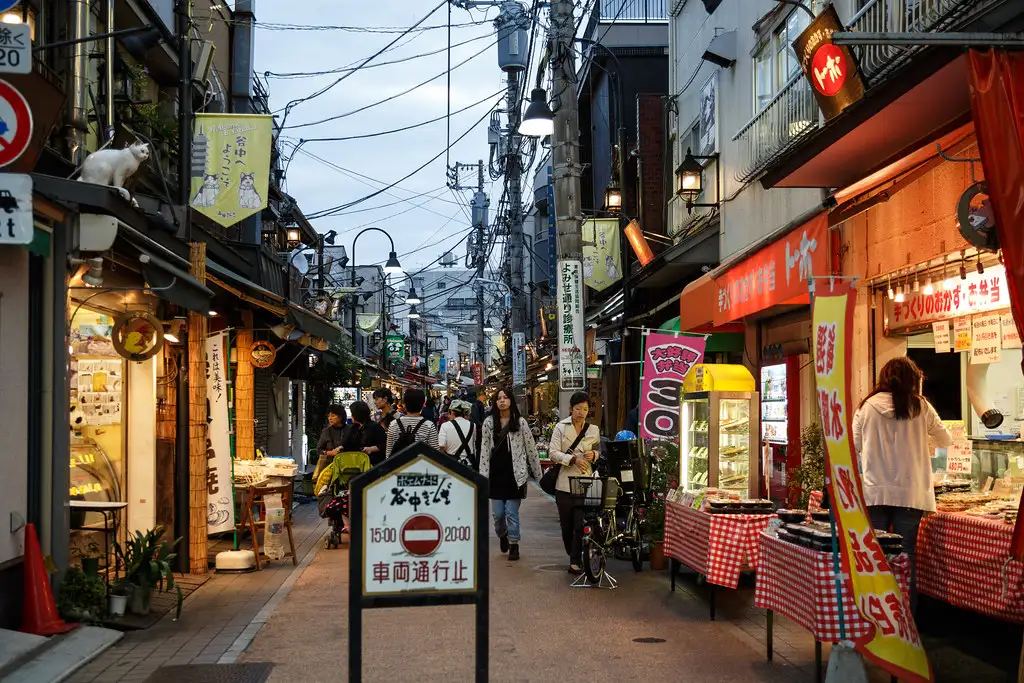
Yanaka Ginza caught my eye during my first visit to Tokyo in 2019. This charming shopping street in the old-world Yanaka district offers a glimpse into Tokyo’s past that few tourists get to experience. Local vendors line both sides of the narrow street, selling everything from fresh produce to traditional sweets and household goods. The smell of freshly grilled yakitori and warm taiyaki wafts through the air as elderly locals chat with shopkeepers they’ve known for decades. Unlike the fast-paced atmosphere of modern Tokyo, this 670-meter stretch maintains the slow, peaceful rhythm of old Japan, where cats lounge in shop windows and the cheerful greetings of merchants echo throughout the day.
Cool Fact:
Did you know that Yanaka Ginza is one of Tokyo’s few shopping streets that survived both World War II and Japan’s economic ups and downs, keeping its old-school charm since the 1940s? The 200-meter shopping arcade is packed with over 70 mom-and-pop shops selling everything from fresh produce to traditional snacks, giving visitors a glimpse into how local Tokyo folks have shopped for generations.
Rainbow Bridge

Look out over Tokyo Bay when you visit the Rainbow Bridge, an iconic symbol of the city’s waterfront. This double-deck bridge spans nearly 2,000 feet and lights up in different colors each night, creating a beautiful reflection on the water below. You can walk across the bridge’s pedestrian deck for free during the day, or time your visit for sunset to see the city’s lights come alive. For the best views, head to nearby Odaiba or take a dinner cruise that passes underneath – it’s especially nice during warm summer evenings when you can feel the bay breeze.